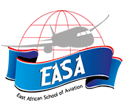The Airworthiness Department is responsible to the Director Aviation Safety, Security and Regulation (DASSR) for all matters concerning the continuing airworthiness of aircraft as required by the Chicago Convention,Annex 6 and 8. The functions and responsibilities of the Airworthiness department are:
- Review, process and record applications for registration of aircraft, registering and de-registering aircraft as appropriate, and issuing certificates of registration;
- Grant or validate aircraft noise certification;
- Survey aircraft for issuance, renewal and validation or acceptance of certificates of airworthiness and processing of documents, as appropriate;
- Issue and review of maintenance organization approvals, air operators, and where no separate licensing Department exists, aircraft maintenance training organizations’ approvals;
- Record, review and process application forms of aircraft maintenance personnel for issuance, renewal, validation and extension of licenses and ratings.
- Evaluate and approve aircraft maintenance programmes, including special maintenance programme requirements for extended diversion time operations (EDTO);
- Evaluate and approve aircraft condition monitoring, aircraft reliability, and aircraft structural integrity programmes, as appropriate
- Evaluate equipment required for specific operations as appropriate for the intended purpose, e.g. minimum equipment list, reduced vertical separation minima, Category II and III precision approach equipment, and EDTO;
- Evaluate and issue export certificates of airworthiness for aircraft, engine and/or propellers, as applicable;
- Evaluate and approve or accept air operators’ MCMs, maintenance organization procedures manuals, and maintenance training organization curriculums;
- Evaluate and issue approval or Acceptance of modification and repair;
- Issue special flight permits with operating limitations for aircraft that do not meet airworthiness requirements but are capable for safe flight. Examples of special flight permits include: flights after a modification or repair or during a process of applying for a supplemental type certificate, delivering or export of aircraft, evacuation of aircraft from impending danger, overweight aircraft carrying extra fuel or navigation equipment, aircraft flying to a location for maintenance.
- Maintain the Kenyan Civil Aircraft register and make the information from the register available, when needed;
- Evaluate and accept air operator’s mass and balance programmes;
- Periodically review the airworthiness records of aircraft on the State’s aircraft register to assess the adequacy of their maintenance and status of aircraft and the competence and diligence of the persons and organizations who perform the maintenance;
- Establish a service difficulty reporting (SDR) system .Analyze and investigate significant defects discovered in aircraft and determine corrective action to be taken where airworthiness may be affected and correct any trends, where necessary;
- Review aircraft and component manufacturers’ SBs and ADs issued by foreign airworthiness authorities to determine their applicability to national aircraft, and take action where airworthiness may be affected. Provide guidance on the implementation of MCAI;
- Monitor the implementation of the ADs and/or related SBs issued by the manufacturer (both foreign and domestic) to ensure air operator’s compliance to the continuing airworthiness of aeronautical products with an established procedure to avoid or correct service difficulties;
- Review current and new international and foreign airworthiness standards related to continuing airworthiness and determine the need for adoption of critical features of those standards into national requirements;
- Review air operator’s airworthiness main base and line stations maintenance provisions including training provisions, organizations and quality assurance procedures of applicants for issuance and renewal of an AOC in coordination with OPS section of the CAA and making recommendations as appropriate with regard to the application;
- Review the facilities and procedures of applicants for issuance and renewal of certificates of approval to conduct maintenance of aircraft, including qualifications of persons issuing a maintenance release;
- Assess qualifications of persons who may be eligible to perform tasks on behalf of the CAA when found qualified and properly authorized (designees);
- Evaluate the design and suitability when qualified, of aircraft components and equipment and their approval for use in aircraft, and assess and approve the installation of aircraft components and equipment;
- Evaluate and approve aircraft maintenance programmes, including condition monitoring programmes, reliability programmes, structural integrity programmes, as applicable;
- Evaluate and approve or accept MCMs, maintenance procedures manuals, and where no separate licensing Department exists, aircraft maintenance training organizations’ curriculums;
- Assist in the airworthiness investigation of aircraft accidents, as necessary; investigate possible violation of the national air law or regulations in regard to airworthiness and take appropriate enforcement action, when necessary;
- Issue directives concerning maintenance, overhaul and repair of aircraft and components thereof, and procedures to be followed by the aviation industry to comply with the national air law and/or regulations related to airworthiness;
- Issue advisory material to the aviation industry concerning airworthiness practices and procedures, where such advice may make a significant contribution to aviation safety;
- Resolve regulatory problems associated with continuing airworthiness, formulating amendments to regulations as necessary, establishing general and technical policies and procedures on which airworthiness requirements can be improved upon and based;
- Take appropriate action on MCAI issued by the State of Design or by the State of Registry;
- Provide advice and recommendations in other areas of CAA responsibility, such as the identification and handling of dangerous goods, and on other technical matters relating to airworthiness as may be required.
- Conduct periodic and unannounced surveillance of maintenance-related facilities including line stations that perform maintenance of its air operators’ aircraft, making appropriate directions and recommendations and approving amendments to the air operator’s AOC authorizations and to the MCMs, as appropriate;
- Conduct periodic and unannounced surveillance of maintenance-related facilities of AMOs on the ramp and in the hangars, workshops, and repair facilities. This includes contracted work that the AMO may outsource;
- Conduct periodic and unannounced surveillance of its air operators’ aircraft undergoing maintenance on the ramp and in the hangar and ensure work is being performed in accordance with the MCM, aircraft maintenance programme, maintenance organization procedure manual, current technical data, and by authorized maintenance personnel;
- Conduct ongoing surveillance of its air operators’ aircraft reliability programmes and take action should results indicate degraded levels of safety;
- Conduct periodic and unannounced surveillance of its air operators’ aircraft during operations to ensure aircraft are airworthy;
- Conduct periodic and unannounced surveillance of foreign air operators’ aircraft operations with regard to airworthiness matters;
- Conduct periodic and unannounced surveillance on personnel certificated and/or authorized to issue a maintenance release; and
- Investigate possible violations of the national law or regulations in regard to airworthiness and to enforce corrective and legal actions, if required.
- Confer at national and international levels on matters relating to the regulations and technical matters concerning airworthiness.







